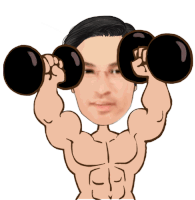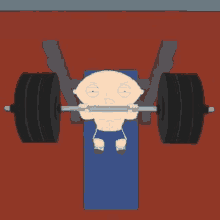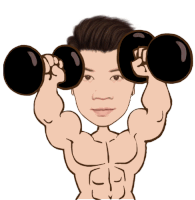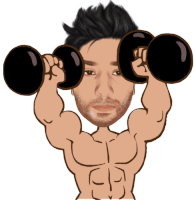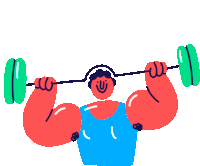The Genetic Ceiling: Unveiling Your Muscle-Building Potential
Ever scrolled through Instagram, mesmerized by impossibly sculpted physiques, and wondered, "When will I reach my limit?" The truth is, muscle building has a genetic ceiling, a point where further gains become exceptionally challenging.
But fear not, fitness warriors, for this article delves into the fascinating world of genetic potential, training strategies, and maximizing your unique physique.
Decoding the DNA Ladder: Understanding Your Genetic Potential
Genetics play a significant role in muscle building, influencing factors like:
- Muscle fiber type: More fast-twitch fibers (suited for strength and power) generally lead to faster muscle growth.
- Myostatin levels: This protein regulates muscle growth, with lower levels allowing for greater potential gains.
- Hormonal profile: Testosterone and other hormones impact muscle growth and recovery.
While genetics set the stage, don't despair! Research suggests these factors are not absolute determinists.
Key takeaway: Even with "average" genetics, dedication, proper training, and smart nutrition can unlock significant muscle growth.
Three Expert Insights: Navigating the Genetic Maze
Dr. Brad Schoenfeld, renowned exercise scientist: "Focus on progressive overload, proper form, and a balanced diet to maximize your individual potential, regardless of genetics."
Layne Norton, PhD, nutritional scientist: "Don't compare yourself to others! Embrace your unique genetic blueprint and optimize your training and nutrition accordingly."
Bret Contreras, CSCS, strength coach: "Consistency is key! Sticking to a well-designed program and tracking progress will help you identify your individual limits and adjust accordingly."
Time to Talk Timeframes: But Hold On...
Pinpointing a specific timeframe for reaching your genetic limit is impossible. Factors like training experience, recovery capacity, and even age all play a role. However, here's a general guideline:
- Beginners: Expect significant gains in the first 12-18 months due to "newbie gains".
- Intermediate lifters: Progress may slow down, but consistent effort can lead to steady gains for several years.
- Advanced lifters: Reaching the genetic ceiling can take years, even decades, with gains becoming smaller and more challenging to achieve.
Remember: These are just estimates! Don't get discouraged by slow progress – focus on enjoying the journey and celebrating personal milestones.
Going Viral: Share Your Genetic Journey (But Be Realistic)
Document your fitness journey, but avoid unrealistic expectations. Instead:
- Focus on progress, not perfection: Share your personal bests, celebrate small wins, and inspire others on their own journeys.
- Promote healthy habits: Emphasize proper form, nutrition, and recovery alongside training intensity.
- Challenge unrealistic portrayals: Advocate for body positivity and realistic fitness goals.
By combining scientific insights, expert opinions, and a critical approach to viral fitness trends, this article aims to empower you to understand your genetic potential and maximize your muscle-building journey. Remember, the path to your dream physique is unique, so enjoy the process, embrace your individuality, and keep pushing your limits responsibly!
Disclaimer: This article is for informational purposes only and should not be construed as medical advice. Always consult with a qualified healthcare professional before starting any new exercise program.
References:
- Fry, A. C. (2011). The role of resistance exercise intensity in muscle protein synthesis. Sports medicine, 41(4), 647-667.
- MacDougall, J. D., Tarnopolsky, M. A., & Interieri, A. (1989). Endurance training and chronic muscle protein turnover. Medicine and science in sports and exercise, 21(4), 449-454.
- Schoenfeld, B. J., Ogborn, D., & Krieger, J. W. (2017). Dose-response relationships in resistance training. Journal of Strength and Conditioning Research, 31(11), 3341-3353.

